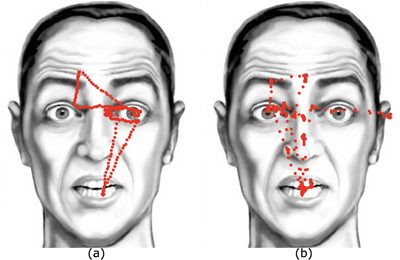Automatic Analysis of Eye Tracking Data for Medical Diagnosis
March 30th, 2009
Categories: Applications, Software, Virtual Medicine

Authors
Galgani, F., Sun, Y., Lanzi, P. L., Leigh, J.About
Several studies have analyzed the link between mental dysfunctions and eye movements, using eye tracking techniques to determine where a person is looking, that is, the fixations. In this paper, we present a novel methodology to improve current diagnosis and evaluation methods of attention disorders. We have developed and tested several data-mining methodologies suitable for the automatic analysis and visualization of eye tracking data. In particular three novel methods of classification of subjects are proposed: (i) a method that uses Expectation Maximization to classify according to statistical likelihood of fixations locations; (ii) a procedure based on the Levenshtein distance method to compare sequences of fixations; and (iii) a method based on the analysis of the transitions frequencies of fixations between regions. Results of evaluation of classification accuracy are finally presented.
Resources
Citation
Galgani, F., Sun, Y., Lanzi, P. L., Leigh, J., Automatic Analysis of Eye Tracking Data for Medical Diagnosis, Proceedings of IEEE Symposium on Computational Intelligence and Data Mining (IEEE CIDM 2009), Nashville, TN, March 30th, 2009.